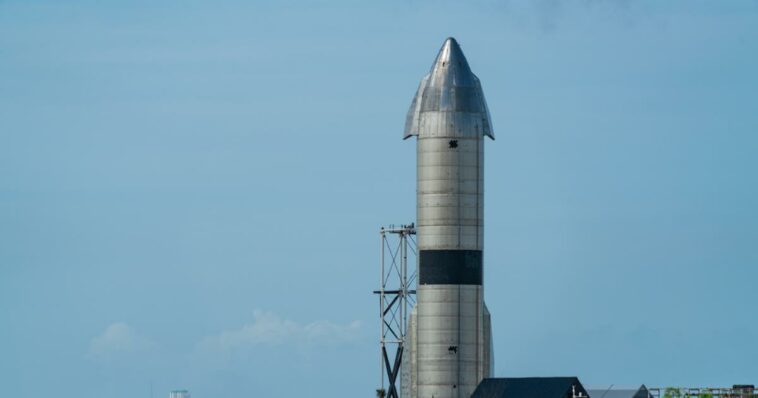While working on the next-generation Starship rocket, SpaceX has struck a slight roadblock in their testing and development. When it comes to sending humans to Mars and building a tiny satellite internet constellation, SpaceX has a new rocket in the works called Starship. Starship’s rocket booster seems to have been damaged, according to a photograph that has been posted widely on social media.
For SpaceX’s aim to execute an orbital test flight in a short amount of time, the effect of this component’s damage on that plan remains unclear. As SpaceX awaits the finalization of an environmental evaluation for its Texas facilities, the company is forging forward with the construction of the Starship. According to its mission description, the rocket is one of three next-generation heavy-lift launch vehicles now under development in the United States, and it is also the most powerful of the three.
The vehicle, Starship, is made up of two halves. In addition to the top stage, known as the Starship, and the lower stage, known as the Super Heavy booster, the vehicle has two stages. One of these rockets (Booster 7) was recently ground tested by SpaceX, and the results of that test seem to have discovered an obvious defect. This issue might be the consequence of testing errors, which would point to a design problem, or it could be the result of a mistake in the testing process, which would point to an isolated incident.
SpaceX wheeled the rocket back to its facilities after many tests, according to a photograph published across various social media networks showing Booster 7’s downcomer not so fortunate. Passes via booster’s liquid oxygen tanks for fuel transfer. For structural stability and optimal storage, it must be pressured in order to resist the pressures exerted on it by the tanks. Starship employs a mixture of methane and liquid oxygen to power its Raptor full flow methane-fueled staged combustion engines.
The downcomer is clearly flattened in the shot since it couldn’t survive the pressure from the surrounding area. Images of Booster 7 after it returned from the testing pad were released after SpaceX completed pneumatic tests earlier this month. To ensure that the vehicle’s performance metrics are accurate, pneumatic tests put the vehicle under full pressure.
Photojournalists had already caught sight of the pipes for the Starship upper stage and the Super Heavy when they were being transported. The pipe runs from the booster’s methane tank to the booster’s engines, and it is encased in the liquid oxygen tank. Due to the booster’s size, it is expected that the booster’s oxygen tank would be pressurized at a greater level than the upper stage Starship.
Similar, but not identical, failures caused a rare Falcon 9 explosion in 2016, but with a different component and fuel. During the months-long examination of the Cape Canaveral Space Force Station in Florida, SpaceX discovered that a small amount of super-cooled Oxygen may have leaked into the major liquid Oxygen tanks. A non-reactive gas is used in these tanks to keep the primary tank from losing pressure during flight, which might cause structural damage to the aircraft.
An unconfirmed theory is that a SpaceX employee left the downcomer unpressurized while the surrounding tank was being pressurized, resulting in its failure. If this is correct, structural or material problems would be ruled out as a contributing factor. A defect-free booster would also suggest no need for an overhaul on the remaining booster prototypes. The latest video from SpaceX’s facilities shows that the company is making solid work on its next booster, Launch 8, while it tackles the current issue with its seventh booster. The downcomer has not yet been enclosed within the rocket, thus it’s doubtful that SpaceX was testing their equipment to failure with this incident.
Source: WCCFTECH




